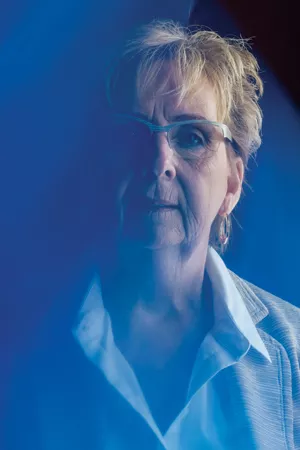
Profiling Pioneer
During the day, she was a hardworking University of Toronto Mississauga student. At night, she combed some of Canada’s most notorious crime scenes as a criminal profiler in the Ontario Provincial Police’s forensic unit. The year was 1991, and Kate Lines had just graduated from the FBI’s elite criminal profiling program in Quantico, Virginia—only the second Canadian ever to do so.
“When I returned from Quantico, I wanted to take some more courses,” says Lines, who earned a BA from UTM in 1977. She enrolled in the crime, law and deviance certificate program, where she explored criminal theory in the classroom and then applied those lessons to such high-profile cases as the abduction and murder of Kristen French, the disappearance of four-year-old Michael Dunahee in Victoria and, later, the Tori Stafford case.
“I literally went from the classroom to the crime scene. Education doesn’t get more impactful than that.”
Lines eventually worked her way up the ranks, becoming the head of Canada’s very first behavioural sciences section and an OPP chief superintendent. Now retired, she is hailed as an innovator, developing the OPP’s Violent Crime Linkage Analysis System (ViCLAS is the national database for tracking violent offenders and the crimes they commit) into a powerful crime-solving tool. She was awarded a Governor General’s medal for her 33-year career and named Police Leader of the Year in 2003 by the Canadian Police Leadership Foundation.
While a high school student in the 1970s, Lines couldn’t have predicted her future career. “I wasn’t an angelic child,” she admits. “My teen years were a bit wild.” She enrolled at UTM because she had once visited her cousin there and was immediately drawn to courses in criminology and the philosophy of deviance. After graduating with her bachelor of arts, “I remember asking, ‘What the heck am I going to do?’”
A roommate’s cousin suggested she consider policing. When she joined the OPP as a patrol cop later that year, there were only 50 women in the force. Four years later, she became one of the OPP’s first female undercover officers before being chosen for the FBI course in 1990.
“When I saw the FBI ad, I felt like it was the first position on which my education would have a direct impact. It sure turned out that way.”
Years later, as head of the force’s behavioural sciences section, Lines hired her former teacher Dr. Les Krames, then a UTM cognitive psychologist, to lead a research project gauging the impact of ViCLAS. While relatively common today, collaboration between the OPP and academia was almost non-existent in the late 1990s, something Lines set out to change.
“I always saw the value of having academics and practitioners work together,” she says.
The partnership went both ways. During a presentation to one of Krames’ classes, Lines met UTM psychology graduate Angela Wyatt Eke. She gave the aspiring behavioural analyst a part-time job on the ViCLAS research project, an inspired decision. Eke, now head of the OPP’s criminal behaviour analysis research division, developed the Ontario Domestic Assault Risk Assessment (ODARA) in 2004. She credits Lines with helping to make it happen.
“Kate is a visionary. She was always looking forward. Even then, she saw the value in this kind of risk assessment tool,” says Eke. ODARA is now used by police forces province-wide.
Despite such a high-profile career, Lines admits she’s even more proud of more recent accomplishments. In 2015, she published a book Crime Seen – From Patrol Cop to Profiler, in which she shines a light on the courage of victims and their families. As a profiler, she rarely gave herself licence to think about the lives of those torn apart by crime. As an author, telling their stories proved a fitting close to her career.
“I got to meet the families and found that they had things to contribute to my storytelling that I didn’t know. I saw how their lives are forever changed, but that they’re ok. It was really cathartic for me to write from their perspective.”
